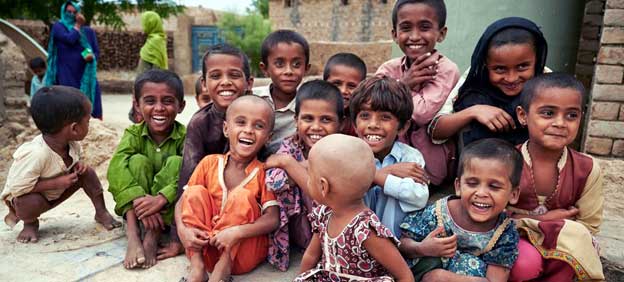WASHINGTON DC / NEW YORK, Apr 07 (IPS) – As World Health Worker Week draws to a close on April 7, health organizations from around the world have been celebrating women’s vital role in the health workforce and sharing stories about the enormous value they bring to all areas of health and care.
But platitudes are not enough. It’s time for global health leaders to step up and turn these words into action.
Globally, women make up almost 70% of the global health workforce and 90% of the frontline health workforce, contributing over $3 trillion to global health each year. The health systems in which they work play a significant role in remote and marginalized groups’ access to health, especially in times of crisis. Despite this, the challenges faced by community health workers (CHWs) are frequently overlooked.
CHWs play a critical role in providing care to vulnerable populations, but they are undervalued and accorded lower status in the “informal” workforce. Upwards of six million women are estimated to be either unpaid or grossly underpaid despite working in core health systems roles and just 14% of CHWs in Africa are salaried.
It is unjust that global health systems rely on the labor of unpaid women who are creating social and economic value that is uncounted and unrewarded. Unpaid work reduces women’s economic security and increases their lifetime poverty.
It also weakens health systems. The pandemic has demonstrated the need for strong and resilient health systems, but there can be no global health security while health systems are subsidized by some of the world’s poorest women.
Women health workers continue to make huge sacrifices to work on the frontlines. They went door-to-door educating households on the COVID-19 virus, tracing contacts, and delivering vaccines.
At last year’s World Health Assembly, India’s one million women community health workers known as accredited social health activists (ASHAs) were honored for successfully protecting the health of millions of people during the pandemic.
At the start of the pandemic, however, reports were coming out of India about the unacceptable risk faced by ASHA workers who were being sent into communities without lack of infection controls and facing stigma and abuse as perceived vectors of the virus.
In 2020, they launched widespread street protests and strikes to demand better pay, protection, and working conditions. ASHA workers may have been acknowledged as global health leaders, but they continue to be underpaid with small performance-based honorariums. They are still fighting for a fair and regular salary and the benefits that come with formal sector roles.
Pre-pandemic the World Health Organization (WHO) projected a global shortage of 10 million health workers by 2030, which COVID-19 now has deepened. Health workers lost their lives to the virus and significant numbers are unable to work, affected by ‘long-COVID’. There have been increased reports of violence towards women health workers during the pandemic–from colleagues as well as patients and their families.
In a 2018 report on health policy and system support to optimize CHW programs, one of the primary WHO recommendations included fair remuneration for CHWs, but this is still far from the norm. When CHWs are compensated, it often fails to align with WHO recommendations, which call for financial packages that are commensurate with the demands of the job, the level of complexity, the training required, and the hours worked.
This World Health Workers Week, we come together with our partners to call on global health leaders, governments and policy makers to disrupt the status quo. We believe that every person, regardless of gender, should have access to quality health and care and opportunities to thrive.
We know a fairly-compensated health workforce–alongside training, supervision, and safe working environments–leads to improved productivity, wider access to healthcare, and better patient outcomes.
The gender pay gap in health of 24% is one of the largest of any sector. We are calling on leaders to take measures to close that gap. We stand with our partners in calling for and focusing on transformative change, including gender-equal leadership in global health and a new social contract for women health workers centered on the need for fair and equal pay and safe and decent work.
There is increasing urgency in both high-income and low- and-middle income countries to prioritize changes in guidelines, funding, and policies. After three years of COVID-19, women health workers, who have been the majority in patient-facing roles, are burned out and traumatized.
Understandably, women are leaving the health sector at all levels in a ‘Great Resignation,’ which threatens to deepen the global health worker shortage crisis.
Addressing these injustices is a moral obligation and an economic necessity. Investing in health workers is a win-win proposition and will send a message that we recognize and value them as professionals.
Not only can we restore justice to neglected global health systems, but we can improve the working conditions and pay of health workers, unleashing broader economic benefits.
We would like to send a clear message that as heads of global health organizations we are committed to building stronger health systems and a more equitable world. Achieving true health equity includes quality care for all–including health workers.
Dr Roopa Dhatt is Executive Director and Co-Founder Women in Global Health, a fast- growing women-led movement with 47 chapters worldwide.
Susannah (“Susie”) Schaefer is Executive Vice Chair, President, and Chief Executive Officer (CEO) of Smile Train, the world’s largest cleft-focused organization with a sustainable and local model of supporting surgery and other forms of comprehensive cleft care.
IPS UN Bureau
© Inter Press Service (2023) — All Rights ReservedOriginal source: Inter Press Service
Check out our Latest News and Follow us at Facebook
Original Source
